#witchcraft culture
Text
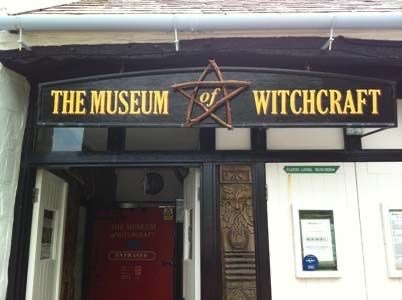
The Museum of Witchcraft in Boscastle, Cornwall.
#goth#goth aesthetic#gothic#mall goth#spooky#vampire#2000s goth#alt#alternative#goth culture#witchcraft#museum#history#cornwall#web finds
2K notes
·
View notes
Text
Dear pagans, polytheists, and witches:
It is okay to celebrate Christmas.
Its okay to celebrating it as a non-Christian.
But you HAVE to accept and admit that it is a culturally Christian holiday.
In many culturally Christian countries you have to be cognizant of how Christmas is elevated above other religion's holidays.
Stop claiming every aspect of it is something stolen from ancient societies: bringing in trees, decorating with lights, gift giving— or whatever else you attribute to the "paganness" of Christmas with no legitimate sources.
Christmas was not stolen from the ancients and you cannot "reclaim it" by spreading pseudo-historical bullshit.
Just admit you will celebrate a culturally Christian holiday— its okay to admit that and move on.
[Edit: see my reblog of this for some basic sources to begin with]
[Edit 2: More info]
[Edit 3: I wrote a post about why you should accept/admit it as Culturally Christian and now that its Dec 25 I'mma just shut off reblogs for this, if you celebrated Christmas I hope you enjoyed it.]
#polytheism#paganism#helpol#witchcraft#occultism#hellenic polytheism#cultural christianity#pagan#witch#christmas#xmas holiday
632 notes
·
View notes
Text
Calling Emo/Scene Artists!
I know a few of us are into Paganism, witchcraft, the occult and divination and I just had a thought.
What if a bunch of us worked on a free to print tarot card set with a style similar to the 2000s? Think like;

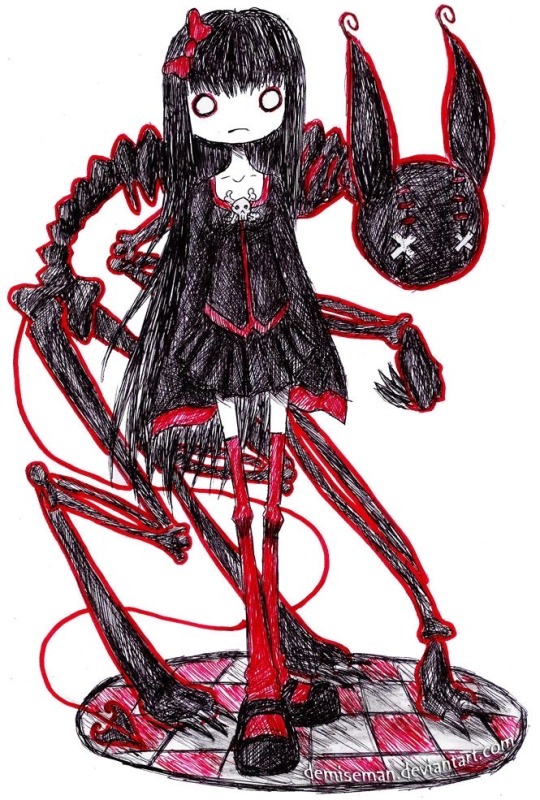

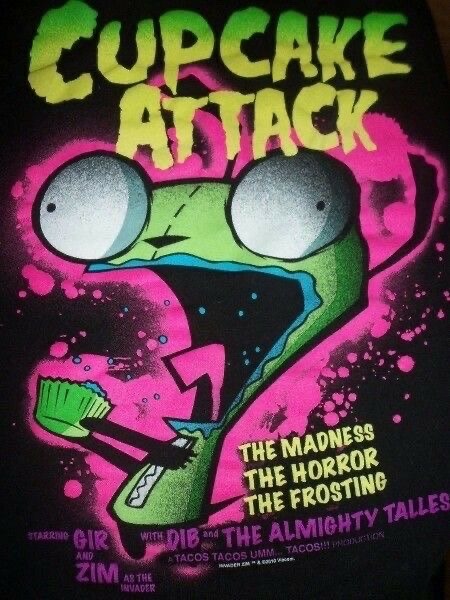
What do y’all think? Think it could be a worthwhile idea/project? (If there’s a good level of response, I’ll begin planning/organising.)
UPDATE: Project is launched! Check this post here (https://www.tumblr.com/curs3d-d1v1n3/746147431961509888/cursed-divine-artist-sign-up-form?source=share) for more information. Can't wait to work with you all!
#emo#emocore#scene#alternative#scenecore#scemo#rawr x3#rawr xd#rawring 20s#rawr :3#rawring twenties#rawr means i love you in dinosaur#rawrrr#rawrz#scenemo#scene kid#emo kid#emo subculture#scene subculture#emo culture#scene culture#y2k emo#y2k scene#paganism#occultism#witchcraft#divination#tarot#pop punk#punk
351 notes
·
View notes
Text
MY HUSBAND WENT FOR A WALK TODAY AND BROUGHT ME BACK A HORSE SKULL HE FOUND YEEEAAAHHH
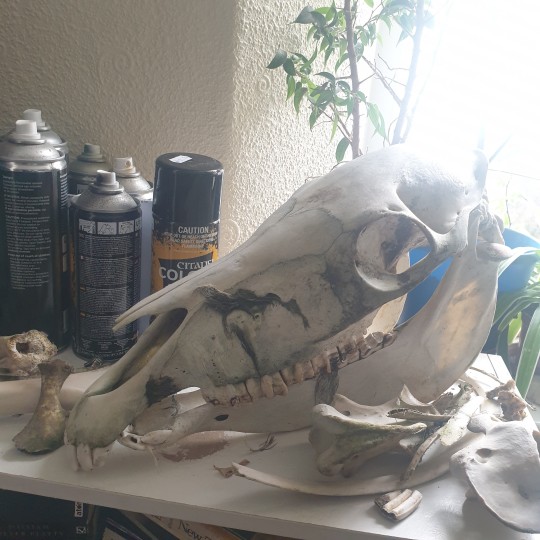
246 notes
·
View notes
Text
The main reason it's important to be at least somewhat literate in historical paganism and folk magic isn't so you can make your own practice exactly like it; it's to be able to recognize when someone is making historically inaccurate claims, because "asserting made-up shit about history as real fact" is a sign you're possibly looking at a cult and/or scam.
For the same reason, it's a good idea to be somewhat literate in pop culture media. Because being able to look at something a person is trying to pass off as Genuine Ancient Tradition or something and recognize that it's nothing like anything people actually believed or did back in Ye Olden Times but it sure as heck resembles something from a popular TV show or TTRPG is a valuable discernment skill.
#paganism#pagan#witchcraft#witchblr#discernment#cults#red flag#red flags#spiritual red flags#spiritual red flag#media#popular media#pop culture
1K notes
·
View notes
Text

e f f i g y
317 notes
·
View notes
Text

#slavic witch#slavic culture#slavic folklore#slavic mythology#slavic#russian mythology#Russia#witch girl#witchcraft#traditional art#digital art#artists on tumblr#traditional drawing
584 notes
·
View notes
Text
Looking for active witch blogs that post:
🕯 Altars
☠ Baneful Magic (curses, hexes, jinxes, etc.)
💸 Budget / Poverty / Struggle / DIY / Upcycling Witchcraft
📖 Magical Books (pics of grimoire pages, flip-throughs, book recs/reviews, etc.)
💲 Money, Business, & Prosperity Witchcraft
💀 Necromancy, Death Witchcraft, and/or Cthonic/Death Deities (also funerary stuff, medical examination, etc., love that stuff)
🌿 Practical & Responsible Herbalism (gardening, cultivating, harvesting, foraging, herbal remedies, recipes, salves, ointments, etc. but no anti-science, anti-medicine, anti-allopathy shit)
📝 Sigils (free to use, preferably)
👻 Spirit Work (esp. animal spirits, dryads, egregores, genus loci, gorgons, & mermaids)
🥄 Spoon-Conscious Witchcraft (for those who are disabled, exhaust easy, etc.)
✨ Things relating to: Santa Muerte, Artemis, Serket/Selqet
🦴 Vulture Culture (responsible)
Reblog or send me an ask if you think your blog might suit my taste.
Disclaimer: not Wiccan, not Pagan, not Heathen; just a witch who's curse-positive, eclectic, & agnostic.
#Witchcraft#Altars#Baneful Magic#Magical Books#Herbalism#Herbal Remedy#Spirit Work#Necromancy#Death Witchcraft#Death Witch#Cthonic Deity#Vulture Culture
212 notes
·
View notes
Text
APPALACHIAN FOLKLORE 101
Appalachia has a rich history in the united states, which goes farther back than most tend to give it credit for. The Appalachian mountains are millions of years old, and humans have only lived in the region for 16,000 years or so, which means the mountains are bound to hold some mysteries and legends.
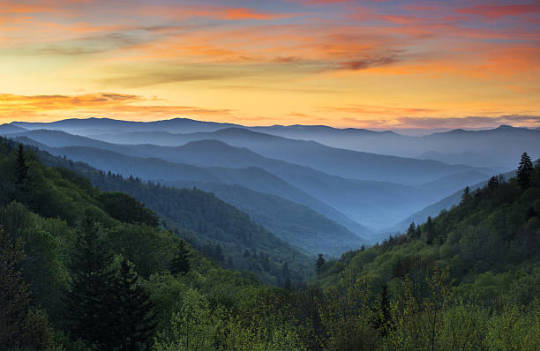
Many of these stories, and folk practices originate from the Native Americans, specifically Cherokee, and are mixed in with the superstitions brought over from the old world specifically English, Irish, and Scottish. As well as the practices brought over from the African Continent During the Slave Trade.
The Native population assisted the early settlers in Appalachia with ways to survive the area, grow food, and even forage for one of Appalachia's staple foods, RAMPS!!!
Let's delve into the history of Appalachian Folklore and the origins of everyone's favorite stories.
Cryptids and Myths
This is one of the most famous aspects of Appalachian folklore and one which outsiders know the most about, Appalachian Myths and their Cryptids that follow. Below I will go over a few of the more famous ones, which many have learned about, either second-hand or through living in the area.
The Moon-Eyed People
There was a group of humanoids called the Moon-Eyed People, who were short, bearded, and had pale skin with large, bright eyes. They were completely nocturnal due to their eyes being extremely sensitive to light. Although not mythical, they were considered a separate race of people by some. The tribes viewed them as a threat and forced them out of their caves on a full moon night. They were said to have scattered to other parts of Appalachia as the moon’s light was too bright for their eyes. There are some early structures that are believed to be related to the Moon-Eyed People, dating back to 400 BCE. Some theories suggest that they were early European settlers who arrived much before Columbus discovered the Americas. Other theories suggest they were people who had Albanism.

Image of The Moon Eyed People Statues in Murphy, North Carolina
Spearfinger
Spearfinger is a Cherokee legend of a shapeshifting, stone-skinned witch with a long knife in place of one of her fingers. She often was described as an old woman, which she would take the form of to convince Cherokee children that she was their grandmother. She would sit with them, brush their hair until they fell asleep, and then kill them with her “spear finger.” She had a love of human livers which she would extract from the bodies of those she killed. It was said she left no visible scars on her victims. She carried her own heart in her hand to protect it, as it was her one weakness. As the legend goes, she was captured and defeated with the help of several birds that carried the information to defeat her. Though she has been destroyed, sometimes you can hear her cackles and songs throughout the mountains.

Image of SpearFinger Cherokee Legend
W*ndigo
This spirit is said to go to where its name is called allowed so since most of us already know the name I won't be writing it out in completion. So out of respect for some of our native readers, it will remain censored
The W*ndigo is a creature, sometimes referred to as an evil spirit, that is said to be 15 feet tall with a body that is thin, with skin pulled so tight that its bones are visible. Many native legends view it as a spirit of greed, gluttony, and insatiable hunger. It is a flesh-eating beast that is considered most active during the colder months, and its presence is easily felt and smelt. It has been described as having a distinct smell of rot and decay due to its skin being ripped and unclean. It produces an overwhelming urge of greed and insatiable want. Most notably, it is not one to chase or seek after its prey; instead, it uses its terrifying mimicry skill. It often mimics human voices, screams, loved ones, or anything that might entice its victim to come to it. In some cases, it is believed the W*ndigo is a spirit that can possess other humans and fill them with greed and selfishness, turning them into W*ndigos as well.
Appalachian Folk Practices
Many of the common Appalachian folk practices stem from things the Native Americans and Enslaved Africans taught them mixed in with cultural practices from Europe. Here I will go over some of the most common practices done by the Appalachian people
Water Dowsing
water dowsing is a practice that has been done for hundreds of years in many different cultures. This practice was brought over by the European settlers and was how many people of the time found where to dig for their water. The practice itself is simple in nature, you take a forked branch from a tree and hold it in both hands and walk around once the stick points down due to the electromagnetic current that's where you dig your well.
this isn't exactly the best way to find water but many people still do it to this day.

Image of Someone Using A Dowsing Rod
Bottle Trees
This practice originated in the Congo area of Africa, in the 9th century A.D. brought to America by the slave trade, in the 17th century. Bottle Trees, were popular in the American South and up into Appalachia, the spirits are said to be attracted to the blue color of the bottles, and captured at night, then when the sun rises it destroys the evil spirits.
This is still practiced in the modern era by many Appalachian Folk Practitioners

Image Of Bottle Trees
SIN EATING
This practice originates from the Ancient Greeks and Egyptians, it branched to many different cultures and has been practiced since antiquity by many Christian and Catholic tribes. And later making its way to America via immigration. The process was once a profession in Appalachia, in which food was placed on or near the deceased and a person dressed in all black would eat the food absolving the dead of all of their earthly sins. This essentially cemented their ability to get into heaven. The practice while sparsely done any more as a profession, it can still be found in many peoples funeral services to this day around the world.
Many cultures still do this practice and the sin eaters usually choose to hide their identity as the practice is seen as taboo to this day.
Popular Herbs To Forage In Appalachia Folk Practices
Wild Leeks or RAMPS!!!
Allium tricoccum, are a species of wild onion native to North America. They are a delicacy, and hold a special place in the hearts of many Appalachians. Native Americans such as the Cherokee ate the plant and used it medicinally for a variety of purposes including as a spring tonic. Early European settlers learned how to Forage from the Indigenous People and continued to eat and use ramps medicinally. Ramps provide many nutrients and minerals and historically have been used to nourish people after harsh winters.

*RAMPS poisoness Look Alike
False hellebore (Veratrum) is a highly poisonous plant that can be mistaken for a prized wild edible, the wild leek, or ramp (Allium tricoccum)
Chicken of the Woods
Laetiporus sulphureus. Chicken of the woods is a sulphur-yellow bracket fungus of trees in woods, parks and gardens. They are delicious and are loved by many foragers, Native Americans, and Appalachians alike. The Native Americans taught the early settlers that these were edible and have been a favorite ever since. Chicken of the Woods is most likely to be found from August through October, but it can be found as early as May and up to December depending on where you live.

*These have a poisoness look alike, Jack O Lantern mushrooms
The Jack-o'-lantern mushroom should not be eaten because it is poisonous to humans. It contains toxic chemicals that can cause severe stomach upset accompanied by vomiting, diarrhea and headache
PawPaws
The Pawpaw Asimina triloba, is well loved by Appalachian locals as a native fruit with a tropical taste. Pawpaw fruit is the largest tree fruit native to the United States, and its custard-like flesh has been said to taste like a combination of banana, pineapple, and Mango. The pawpaw has been used by Native Americans for centuries for both its fruit and its medicinal properties. Many tribes, including the Osage and Sioux, ate the fruit; the Iroquois used the mashed fruit to make small dried cakes to reconstitute later for cooking. PawPaw season is late summer, look for the smell of rotting fruit, eat the ones that are squishy to the touch.

*They resemble mangos on the trees, many options to eat the ones that are on the floor already as they usually have ripened, but you can also ripen them at home.
Appalachia has a rich and beautiful history filled with magic and delicious food. But the only real way to learn about Appalachia is to visit it. Go and speak with locals, learn about the history, their delicious foods, and powerful Grandma magic, and you too will fall in love with Appalachia.
Thank you for sitting down and having Tea with me on the Other side of the Great Divide

#witchcraft#ritual#occultism#esoteric#occult#spirit work#magi#magus#magick#witch#witchy vibes#witches#witch tips#appalachian folk magic#appalachia#appalachain mountains#american folklore#folklore#folklorist#appalachian culture#foraging#WanderingSorcerer
621 notes
·
View notes
Text
Ima say it bone finders that dig up pet graves are FUCKING HORRIBLE AND I ONLY WISH THE WORST FOR THEM.
I saw a post about a girl who was heart broken just fucking inconsolable because someone dug up her fucking dog's grave and took her dog's corpse..
Now before you ask " oh maybe it was an animal?"
Nope, all the rocks were moved off the grave put in a pile near the grave and there was shovel marks in the dirt and the hole was just empty...
Update more info: she had buried the family dog in their favorite fishing spot, a spot she’d been going to with her dog and grandpa since childhood. The same spot they scattered her grandpa’s ashes.. the dogs grave and memorial stone was next to the grandpa’s memorials stone..... The grandpa's memorial stone was also knocked over along with the dogs memorial stone OnO
I can't imagine the pain of finding out the pet you loved was ripped from it's resting place, you have no place to mourn and no idea where they are or what someone is doing with them.
What's sad is there is a lot of stories like this and it's just heart breaking.
{ that doesn't even go over people stealing dead people's bones.. }
It's sick
Do not dig up people's dead pets
{ don't dig up people bones either }
#witchcraft#witch#naturecore#goblincore#pagan witch#witchy#witchy things#witches#witchcore#witch community#bonecore#vulture culture#vulture core#vulture community#animal bones#bone finders#Crowcore
808 notes
·
View notes
Text
I'm begging y'all to use Uno Reverse Cards in your reflection/return-to-sender spells
462 notes
·
View notes
Text

Stevie Nicks - UC Santa Barbara, California, October 2, 1977 - by Neal Preston.
#stevie nicks#fleetwood mac#70s#1970s#icons#pop#retro#rock#music#women#celebs#singer#witchcraft#fashion#musicians#style#people#b&w#lifestyle#culture#neal preston#📸#rumours#🎶
245 notes
·
View notes
Text
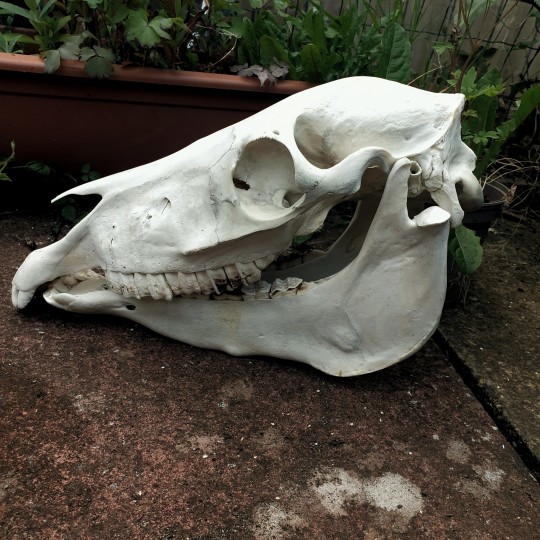


finished cleaning her
#tw dead animal#dead animal#vulture culture#taxidermy#angie talks#witchcraft#witchblr#goth#gothic#goth aesthetic#horse skull#oddities
176 notes
·
View notes
Text
I think paganism would be better off if following gods from your “ancestors” was rather phrased as “gods of my culture”. Because well, for many of us, the Christian God is the god of our ancestors, especially the ones I argue matter most to our personal identities which are recent ancestry. After all, my Slovak family worshipped the Lord, but I choose to worship Morena to be closer to my culture. I also think this helps to include people who were adopted into cultures, whether by families or growing up there.
#my Cornish last name has Breton origins but I would never claim to be Breton#paganism#pagan#witchblr#witchcraft#paganblr#this also helps to emphasise culture over “blood”
227 notes
·
View notes
Text

character redesign
experimenting on how to convey albinism in my art style
#you may recognize her as fuyumi#her name is violeta now#I’ve been in the process of relocalizing my story and characters#instead of basing it in the US I want to have my story take place on my country chile#most specifically in the chiloé archipelago#it’s a place in chile famous for its culture and folklore#and I think it tights very neatly with the story about witches and demons I want tell#like you gringos aren’t ready for the chiloé witchcraft lore#parasomnia#violeta eberhardt#oc#my ocs#my art
315 notes
·
View notes
Text
I got another witchy FAQs question so I want to go ahead and share it.
This time, we're talking some basic chaos magic with different types of thoughtforms!
Please note that I am not an expert in chaos magic, nor do I consider myself a chaos magician, so feel free to (kindly) leave feedback or corrections as needed. ^^
Thoughtforms 101
Definition of Thoughtform: Thoughtform is a catch-all term from any entity that was created with or by human thought (conscious or otherwise).
Types of Thoughtforms: Common thoughtforms include sigils, servitors, thoughtform companions (aka tulpas), daemons, and egregores.
Sigils: Most folks who create sigils and use sigil magic probably don't think about sigils as a type of chaos magic or a thoughtform. However, sigils actually do fall into this category. Think of a sigil as being like a simple computer program that's powered by your mind. You give the program a basic function (such as protection or prosperity) and the magical "coding" of your intentions allows the sigil to carry it out.
Servitors: If sigils are basic computer programs, then servitors are robots. They're not sentient per se, as they still require the coding and programming that comes with intention and magical energy. Yet they're much more complex than a sigil and can carry out higher-level functions & multiple tasks (e.g., drawing in people to shop on your Etsy page for prosperity, or actively guarding a space or casting a magic circle for protection).
Thoughtform companions: The widespread term for this type is "tulpa," and creating/having one of these thoughtforms is commonly referred to as "tulpamancy." Since there's also a widespread controversy over these terms, I don't use them myself. I say "creating or working with a thoughtform," and I'll refer to the entity as a thoughtform or thoughtform companion. Regardless of the terminology or beliefs behind this category, they are defined as a separate consciousness created by the thoughts and actions of a human. The human is typically referred to as the "host," since the companion is typically treated as its own separate consciousness. These are fully sentient, autonomous beings with their own thoughts and feelings. They're generally created, either intentionally or not, as friends for the host (hence my personal terminology for them).
Daemons: This category is similar to a companion, but with a different origin and function. Daemons have been documented since ancient Greece, to my knowledge. A daemon is also a sentient entity, however, they are not created intentionally by the host (although they can be brought to the forefront by the human in question). A daemon is instead a conscious entity created by, and representative of, the human being's subconscious mind. They typically serve as helpers and mental guides for the human. They are not considered separate entities; instead, they're part of you.
Egregores: These are essentially the AIs of the thoughtform world. Whereas companions and daemons exist within the human mind, egregores are similar to servitors and sigils - created by the mind, but separate from it. Egregores are often made or manifested by a group of people intentionally for a purpose. E.g., a coven may create one as a guardian or a spiritual guide. They're also often created by accident from widespread symbols - for example, branding. And nations. Every time somebody posts a picture of the Starbucks logo, you're most likely feeding an egregore, according to one theory I've heard. Do I believe that personally? Not sure. (I do have an exact source for this one available on request.) As far as I know, egregores exist with varying degrees of sentience, power, and free will depending on the individual scenario (much like artificially intelligent computers & androids in science fiction).
Pop Culture Entities / Deities: These are often referred to as PCEs or PCDs. I prefer the former but I often use them interchangeably. Some folks prefer to be more specific. For example, Raiden from Mortal Kombat is considered a god in that series, so many folks would consider him a pop culture deity. Whereas Dean Winchester is *not* a deity in Supernatural - so he could be considered a pop culture entity instead. However, this is up to the preferences of the individual entity & practitioner.
Differences between PCDs and Egregores: Egregores are ALWAYS created, intentionally or not, by human energy and thought. PCDs, on the other hand, can have a mixed origin sometimes. Some of them may be pure egregores, manifested on purpose or by accident. Others may be preexisting spirits - often nature spirits that are aligned closely to the fandom content - that latch onto a fictional work as a power source, and eventually fuse with it. And then another theory is that PCDs are *all* preexisting spirits or even deities wearing a mask - so for example, folks with this belief would say that PCD Marvel Loki is just Loki appearing in a different form/aspect. I personally think that all PCEs have a unique origin and I try not to make any assumptions.
Where do I fact check you and/or learn more?: Unfortunately, it is *really damn hard* to find good, solid information on pop culture work because it's very new. And while there's *lots* of info on chaos magic, you have to be careful to check the reliability of the source, much as is the case with demonolatry sources. Fortunately, Tumblr is a great source to find other pop culture practitioners. I personally also have *some* sources available for these topics on request, I'm just too lazy to dig through my Drive right at this moment. :)
#thoughtforms#tulpamancy#chaos magician#chaos magic#sigils#servitors#egregores#pop culture paganism#pop culture witchcraft#pop culture magic#witchy tips#witchblr
160 notes
·
View notes